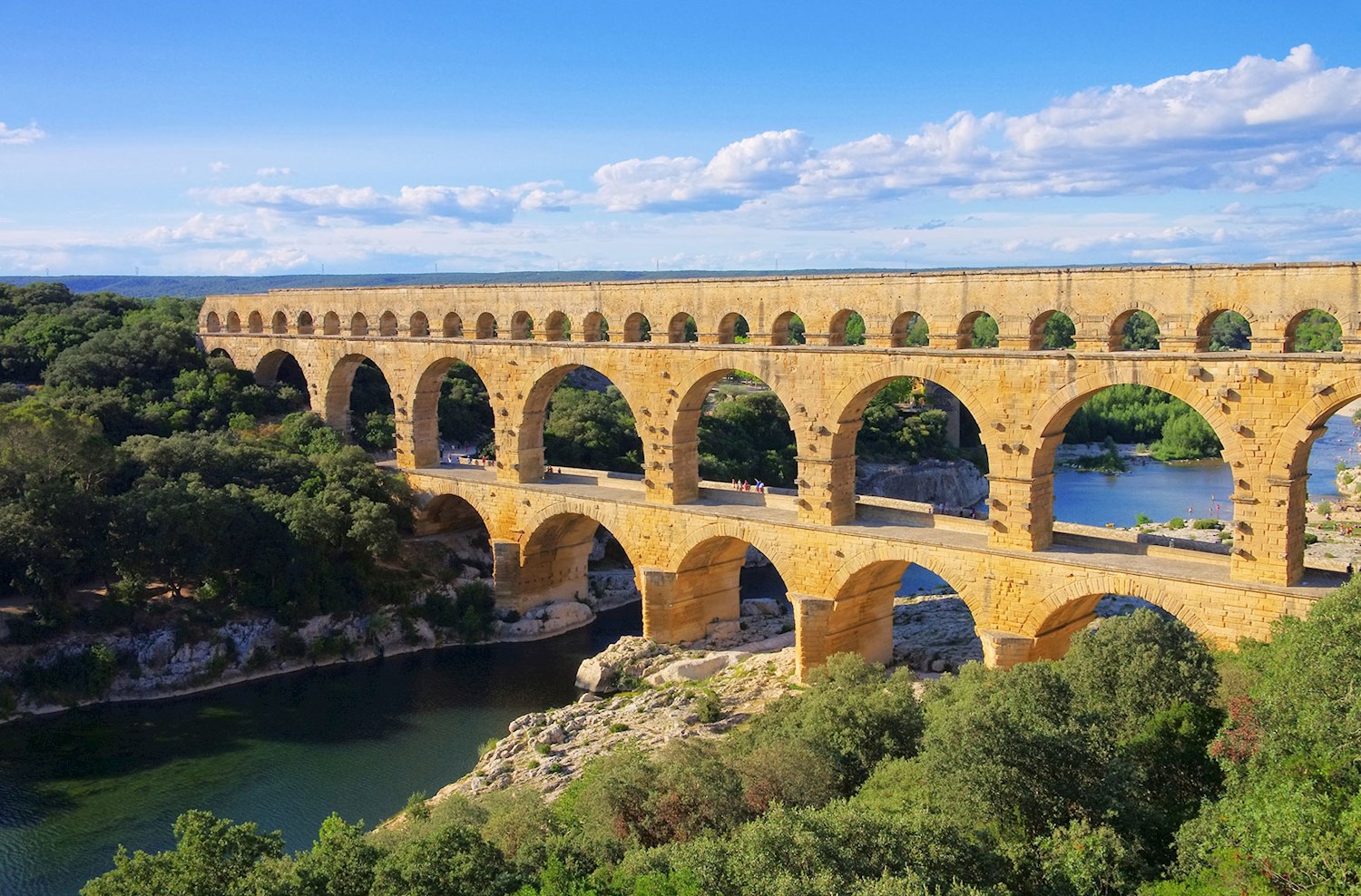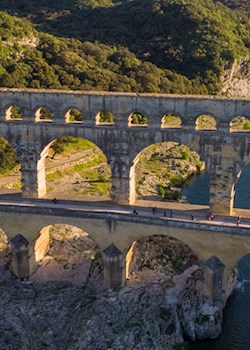Attractions
Marvel over (or under) a Roman engineering marvel at Pont du Gard
FRANCE // The Romans knew a thing or two about grandiose engineering. Their exceptionally preserved three-tiered aqueduct Pot du Gard in Languedoc formed part of a system of channels 50km (31 miles) long built around 19 BC to transport water from Uzès to Nimes. Archaeologists have since unearthed the extraordinary technicality and precision of the Romans' endeavour: the soaring aqueduct's hand-carved, locally quarried rock incorporated numbered stones, scaffolding support and the use of hoists. It descends by 2.5cm (1in) across its length, providing the necessary gradient to keep the water flowing across the river. Using nearly one thousand men, the colossal structure was, astonishingly, completed in just five years. Floodlit in the early evening, the aqueduct straddles two bushy banks with sandy river beaches and a walking trail nearby. You can walk along the tiers, but to truly grasp its sheer scale - a whopping 275m (900ft) long and 48.8m (160ft) high - paddle out in a canoe or kayak to gaze up in awe from the water. April, May and June are best, as winter floods can make the river impassable.





